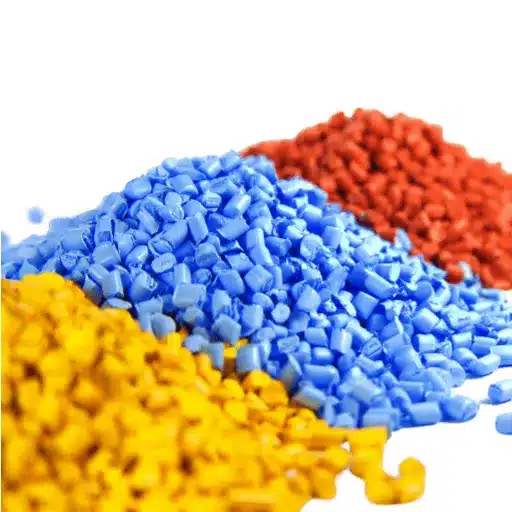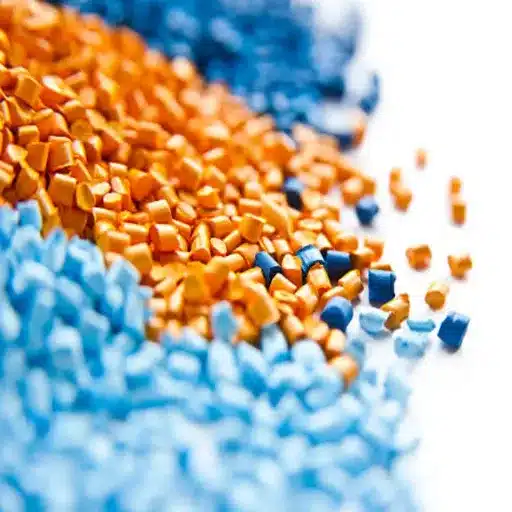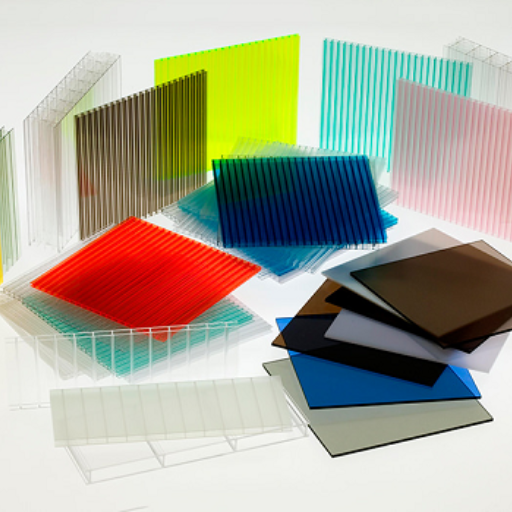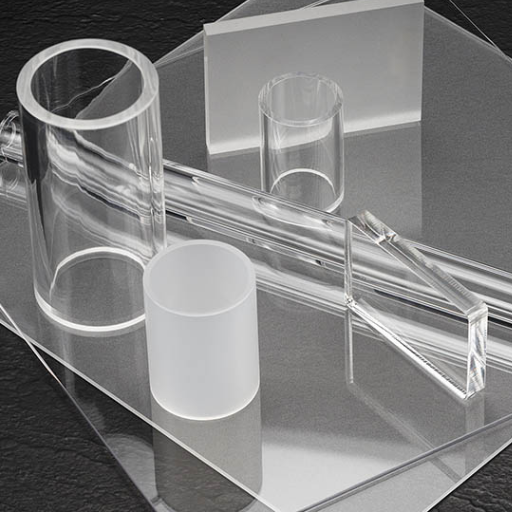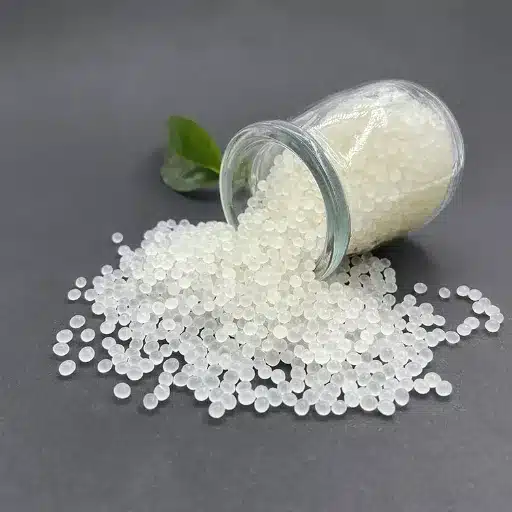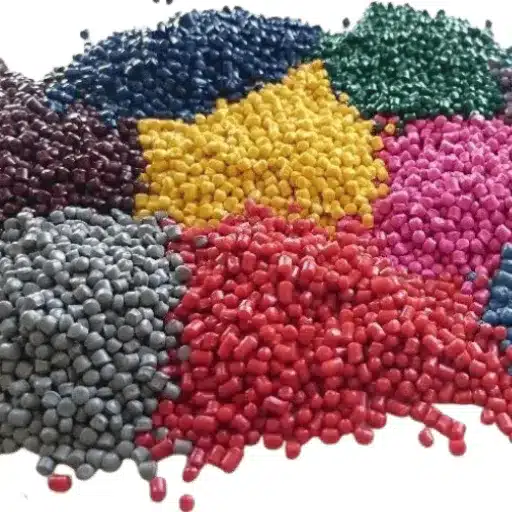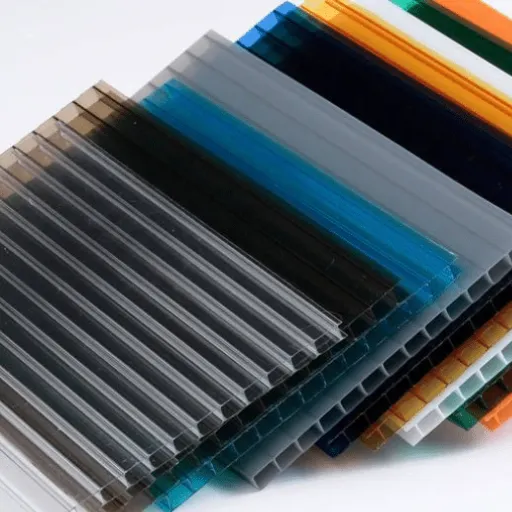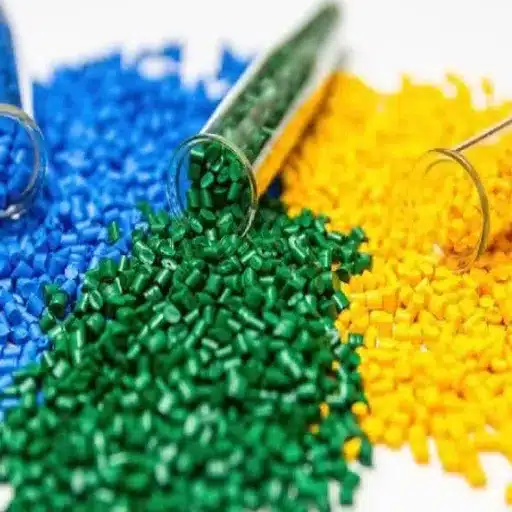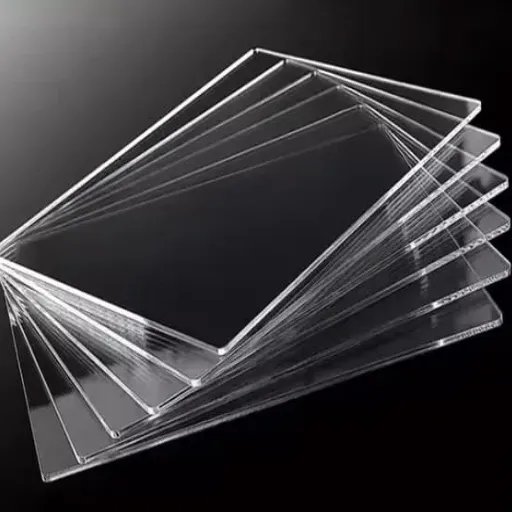Of the main manufacturing means in today’s industrial sectors, injection molding deserves a mention as it is widely used for all kinds of operations. At the core of this new process is one vital material: bulk plastic pellets. You would never guess by looking at them that these small, simple, almost uniform pellets have the power to materialize almost any product we lay our eyes or hands on, be it a piece of plastic for automobiles, household appliances, packaging, or various tools found in everyday life. But what are these basic units made of, and how do they influence the molding process? And why should that basic unit ever matter?
In this article, you will explore the key features of pellets in bulk, inclusive of general types of pellets, functionality, and properties in a manner where precision, efficiency, and success in general are distinguished. Whether you are an established player in the plastic industry or a newbie who’s getting to know all this very important but seemingly complicated world of plastics, you will obtain privilege in making well-informed decisions when choosing pellets as a material. Understand some secret and useful insights into material selection due to gravity force, and be introduced to the wizardry-injection molding-which is indicative of great rewards.
Understanding Plastic Pellets

What Are the Plastic Pellets For?
Resin pellets or plastic pellets are also known as polymer granules. They are the small, beadlike materials that are the primary raw feed for plastic product manufacturing through procedures like injection molding. These are made of various categories of polymers—generally polyethylene (PE), polypropylene (PP), polystyrene (PS), or polyvinyl chloride (PVC), each with characteristics suitable for different applications.
Plastic pellets are produced on the base of polymerization of raw materials like petroleum and the byproducts of natural gas. They are then cooled, chopped, and formed into uniform small granules facilitating convenient handling, transportation, and feeding into myriad manufacturing machinery. The wider use of plastic pellets across industries for manufacturing products, from automobiles components to consumer goods, comes from their ability to ensure precision, consistency, and efficiency of a production process due to their standard shape and size.
Types of Plastic Pellets
Various types of plastic pellets are available for different industries. Some of the main categories include:
- Thermoplastics
●The standard types of pellets used, which included the materials towards polyethylene (PE), polypropylene (PP), and polystyrene (PS). The resilience and propriety tendencies of thermoplastics to be compressed and molded numerous times are regarded to fit in products such as packaging materials, cases, and automotive parts.
- Engineering Plastics
●Another group of performance polymers, which include polycarbonate (PC), polyamide (nylon), and polyoxymethylene (POM). These high-performance pellets are known for their high-grade mechanical properties, durability, and their resistance to wear and are apt for applications of industry, electronics, and machinery.
- Biodegradable Plastics
●With public consciousness about environmental awareness increasing, biodegradable plastic pellets, such as polylactic acid (PLA) and polyhydroxyalkanoates (PHA), have gained favor. They come into the picture in an arena such as eco-friendly packaging, agricultural films, and disposable items, with the claim that it degrades more easily under certain conditions.
- Recycled Plastic Pellets
●These are made by processing post-industrial or post-consumer plastic waste and help in reducing the regular plastic waste thrown in with cost-effective and sustainable uses designed for manufacturers, to be typically in use in outdoor furniture, construction materials, and non-critical packaging.
- Specialty Plastics
●These are meant for conditions of extreme performance and customized formulations for specific applications. Among these are fluoropolymers with high resistance to chemicals, used for aerospace applications, conductive plastic pellets for electronics, and electrical applications.
Plastic pellets are so versatile that they remain fundamental to countless modern manufacturing processes, meeting equally the needs of forward-thinking industry and efficiency.
Polypropylene (PP) Pellets
Polypropylene is a plastics resin that includes some of the most common plastics feedstock because it is the most versatile and most processed material in the world today. Among many special attributes are PP’s durability, chemical resistance, and light weight. PP is well suited to applications in packaging, automotive parts, textiles, and an assortment of other consumer products.
Since PP is recyclable, reusability has made it a major player in trying to reduce the environmental impact of many areas. Industry experts highlight the benefits of glass fiber reinforcement to further enhance its properties of strength and thermal resistance such that it can be used in the building/construction and electronics industries.
Polyethylene (PE) Pellets
Polyethylene (PE) pelleted material stands as one of the most versatile and highly demanded polymers worldwide. They are handy in applications throughout packaging, parts of the automobile, and consumer sector. The material excels in toughness and chemical resistance.
The current data discloses that the relationship between polyethylene pellets and sustainability is massive—being they are completely recyclable and using less energy in production. Many sectors are fast-binding themselves to the use of high molecular HDPE or locations with recycled content to gradually reduce the amount of waste. Furthermore, new developments in recycling methodology allow a significant percentage of polyethylene to be reused, which will now save resources for further use of virgin material by decreasing the carbon footprints of that particular production. Such pellets make a significant material part in wanting the human race to have more ecological solutions for the multiple industries.
Other Thermoplastic Resins
Normally suitable to all industrial sectors for the quality of being meltable and reshaped various times, thermoplastic resins belong to a miscellaneous category of materials. Included amongst the other popular thermoplastic resins are polypropylene (PP), polyvinyl chloride (PVC), and polystyrene (PS)—each affording a high degree of uniqueness in terms of properties. In general, chemical resistance and durability are the more notable properties of PP, stiffness or suppleness of PVC appears contingent upon the formulation, and PS is widely used in packaging for its lightweight and thermally insulating properties.
Looking at the current trends, it can be seen that polypropylene finds favor in such applications directed at sustainability, those that are primarily in regard to reusable packaging and automotive parts for reasons of light weight and recyclability. The developments in bioplastic (like PLA) sector further establish new expectations regarding environment-friendly alternatives, which is quite likely to become prominent in many applications.
Benefits of Buying Bulk Plastic Pellets

Cost Management and Strategic Stock-Up
Plastic pellet buying in bulk has tremendously decreased total expenditure for the manufacturers and large organizations. Suppliers very often give discounts on purchases made in bulk due to low costs of packaging, logistics, and handling, thereby lessening the cost per unit as a result. Additionally, stocking up on bulk supplies minimizes the frequency of costly reorderings and ensures a smooth workflow, keeping production stations functioning constantly without any annoying or costly delays and shortages.
Businesses opting toward sustainable practices—such as recycling or utilizing biodegradable pellets—will likely achieve sustainable economic results via reduced waste disposal and by serving the markets sensitive to environmental concerns. These avenues enhance both profit and sustainability for different businesses.
Quality Management in Bulk Supplies
Quality management on wholesale supplies is a crucial part of securing product integrity and consumer trust. Business organizations can efficiently implement quality management in bulk materials by employing technological testing standards like automated sorting and real-time monitoring tools to identify variance or defects. Moreover, supplier standards should be defined straight up and checks be conducted periodically to ensure necessary value clarification in raw material requirements.
The possibility of drawing business insights from trends helps predict potential supply chain challenges, allowing organizations to actively seek timely preventive remedies and maintain quality standards.
Consistency in Manufacturing
To prevent disruption, manufacturing must now be proactive and data-driven. Using available data, companies can detect emerging threats in their supply chain—they can get a heads up on scarcity of particular raw materials or disruptions in certain key markets as a consequence. The data can thus help in an informed decision-making process, allowing manufacturers to diversify suppliers or adjust timelines before any eventual situation becomes problematic.
The use of predictive analytics can be a good tool in predicting demand trends; thus the manufacturer can keep production at desirable levels that closely match the market demand while maintaining standards of high quality. The integration of real-time data creates resilient machinery with the highest efficiency and consistency-to-last manufacturing as the output.
Applications of Plastic Pellets in Injection Molding
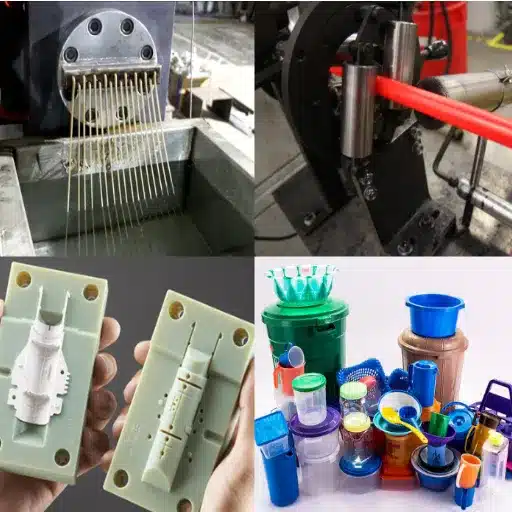
How Are Plastic Pellets Used in Injection Molding?
Plastic pellets are essentially the raw material that later becomes molded products when they are processed under high pressure. Most plastic pellets are made from thermoplastic polymers that are fed into the injection molding machine, which heats them to their melting points. As the plastic is molten, it is shot under high pressure into a pre-designed mold. This results in all of the cavity’s details being filled up. As the plastic cools down, it builds up and solidifies. The mold lid then lifts, and the final product is ejected.
Recently, the practice of using specially produced plastic pellets, such as bio-based polymers or recycled polymers, has been on the rise. This transformation represents the growing market interest towards sustainable manufacturing practices. Furthermore, innovative features in pellet design such as additional strength, flexibility or heat-resistance associated with customizing products to accommodate highly specialized applications are now available to manufacturers. Basically, these innovations are a reflection of how plastic pellets enhance the process of working injection molding along with cutting-edge technological know-how.
Injection Molding Resin Substrates
A significant function performed by each volume of plastic material in the injection molding process is as a secondary raw material for producing finished plastic products. Resins, in turn, have their unique sets of properties like strength, flexibility, and heat resistance, which consequently make them ideal for application in differing directions. Commonly known resins include polypropylene, polyethylene, and polystyrene which are used in varying industries from automotive to consumer goods.
There is an inclination towards biobased and recycled resins as manufacturers target fulfillment of environmental sustainability goals. These are the evolving resin choices that do not only pay due concern to stemming any environmental impact but equally cater to the increasing eco-friendly-product-drive without sacrificing performance efficiency.
Comparing to Other Molding Methods
Injection molding is a sophisticated form of molding—a highly developed method of molding for plastics—available since very early days and being applied for many purposes. While compression molding was an older, more primitive way of molding materials, it was used for a long time and is nowadays only employed for some specific, simple applications. Extrusion is helpful in developing long shapes and parts in continuous form.
Inquiries related to sustainability in the molding processes have seen a big surge. Questions often arise about whether injection molding is the best suited technique from the perspective of sustainability compared with other techniques. Injection molding is adaptive for featuring the usage of bio-based and recycled resins that can trim down potentially wasteful energy during production. While even in other methods opportunities for using eco-plastic materials exist, injection molding stands out with its versatility and precision for those manufacturers who value environmental considerations along with high quality output.
Factors to Consider When Purchasing Bulk Plastic Pellets

Key Purchasing Considerations
1. Material Specifications
When choosing from amongst bulk plastic pellets, one of the most important things that you’ll have to do is to ensure that the selected material fits into your desired performance and quality standards. Look first at what resin type(s) you need for your application—polypropylene, polyethylene, and polystyrene are potential options for you, with each of them having its own peculiar traits like strength, flexibility, heat resistance, etc.
2. Melt Flow Rate (MFR)
MFR is crucial because it decides the flowability during injection molding. Ensure that either the special kind of additive or filler should be included—for instance, glass fiber, UV absorbing stabilizer—that improves some properties, say, durability against weathering.
3. Certifications and Compliance
The best suppliers will offer their pellets with FDA, REACH, or RoHS certificates. This is to ensure that products meet environmental and safety compliance; such a stance is, apart from regulatory reasons, in line with eco-respecting goals.
4. Density
Density can affect the weight and strength of the final product. Materials of low density are frequently sought for applications that need light-weight solutions, especially in the automotive and aerospace sectors. This balancing point between characteristics when specifically designed for the end-use application can concurrently boost energetically sustainable and wasteless performance.
5. Supplier Reputation and Service
Businesses consider topmost the suppliers’ commitment throughout the sales cycle. A perceived reputation influence especially plays a critical role in shaping loyalty at the buying stage. Buyers trust the practices in suppliers or manufacturing organizations that demonstrate reliability and comprehensive support throughout the procurement process.
Frequently Asked Questions
What is the density of polypropylene pellets for injection molding?
The density of polypropylene pellets typically ranges from 0.90 to 0.91 g/cm³, so it is lightweight and strong at the same time. This low density means that it provides a significant benefit to aid in weight reductions that are required in certain kinds of applications like the automotive and engineering fields. The weight of the polymer is essentially the other determining factor in the rate of injection molding. When a grade with the best characteristics is selected, polypropylene operates at an optimal level for best performance and quality in the final product.
What is the way to select the proper grade of plastic pellets for a project?
In procuring the right kind of plastic pellets, it is important to consider things like the application in question, mechanical property requirements, and environmental conditions. For example, in case you need something rubbery and extremely flexible, TPE pellets might be just the thing for you. And if you are looking for something very stiff and durable, polypropylene or polycarbonate (PC) might be the better choice for it. Another essential thing to consider is whether a particular grade of material corresponds to the kind of quality your injection molding technique requires, whether it is concerning color or protection during UV exposure.
What are the common thermoplastic choices for buying plastic pellets in bulk?
The most common bulk form of plastic pellets is thermoplastics among which are polyethylene (PE), polypropylene (PP), polystyrene (PS), and polycarbonate (PC). Each of these materials has unique properties that fit them for specific purposes. Polypropylene, for instance, ranks high in chemical resistance and low density, while polycarbonate provides a balance of high impact resistance and optical clarity. Depending on your project’s requirements, these materials can be picked to achieve the ideal performance and characteristics for your end products.
How does one calculate the amount of plastic resins needed for injection molding?
Calculating the amount involves understanding the product’s density and volume. The formula depends upon the product’s density and injection specifications. A measurement involves such a relationship: Weight of product = Density of the product (lbs/cubic inches) × Volume of the product. Users may often consider a 10-15% increase of the material amount to cover waste during processing. This 10-15% buffer minimizes the chances of shortages and ensures production goals are met appropriately.
How to go about shipping bulk plastic pellets?
Efficient bulk shipment of plastic pellets is possible with different methods depending on the quantity and the destination. Many suppliers offer shipment services tailored to accommodate huge orders often measured in pounds (lbs) or tons. Using bulk containers can be of much assistance in reducing shipping costs and ensuring the protection from pressure and damages throughout the transport. It’s essential that you work with a supplier who has understanding of the logistics of shipping. Such a supplier can give you the best options. Realize that some shipping time might be needed, so plan your production schedule accordingly.
Reference Sources
| Institution | Research Focus |
|---|---|
| Pennsylvania State University | A research collaboration exploring the behavior of materials during injection molding processes. Learn more |
| Massachusetts Institute of Technology (MIT) | A thesis discussing the role of plastic pellets in injection molding and their behavior under heat and pressure. Learn more |
| City of Jackson, MS | A detailed guide on plastic part design for injection molding, including the use of plastic pellets. Learn more |
Summary and Conclusion
Bulk plastic pellets represent the cornerstone of modern injection molding manufacturing, serving as the fundamental raw material that transforms into countless products across multiple industries. From automotive components to consumer goods, packaging materials to electronic devices, these small polymer granules play an outsized role in shaping the physical world around us.
Throughout this comprehensive guide, we have explored the diverse types of plastic pellets available—from standard thermoplastics like polyethylene and polypropylene to specialized engineering plastics and emerging biodegradable alternatives. Each category offers unique properties tailored to specific applications, allowing manufacturers to select materials that precisely meet their performance requirements.
The benefits of purchasing plastic pellets in bulk extend far beyond simple cost savings. Strategic bulk procurement enables better quality management, ensures consistency in manufacturing processes, reduces supply chain disruptions, and supports sustainability initiatives through the use of recycled and biodegradable materials. These advantages collectively contribute to more efficient, reliable, and environmentally responsible production operations.
When selecting plastic pellets, manufacturers must carefully consider multiple factors including material specifications, melt flow rate, density, certifications, and supplier reputation. Making informed decisions in these areas directly impacts product quality, manufacturing efficiency, and overall project success. The injection molding process itself benefits from the uniform size and composition of plastic pellets, enabling precise control over temperature, pressure, and flow characteristics.
As the manufacturing industry continues to evolve toward greater sustainability and efficiency, plastic pellets remain at the forefront of innovation. Whether you are an experienced professional or new to the field, understanding the intricacies of bulk plastic pellets empowers you to make better material choices, optimize production processes, and contribute to a more sustainable manufacturing future. The journey from simple polymer granules to finished products represents not just a manufacturing process, but a testament to human ingenuity and the endless possibilities of material science.







